The giant panda (Ailuropoda melanoleuca) is instantly recognizable for its striking black-and-white fur and its gentle, lumbering presence. Native to the misty bamboo forests of the mountains in southwestern China, the giant panda stands out not just for its unique diet and appearance, but also for the deep cultural and spiritual resonance it holds worldwide. Once critically endangered, the panda’s journey toward recovery has transformed it into a global symbol of hope, harmony, and dedicated conservation action.
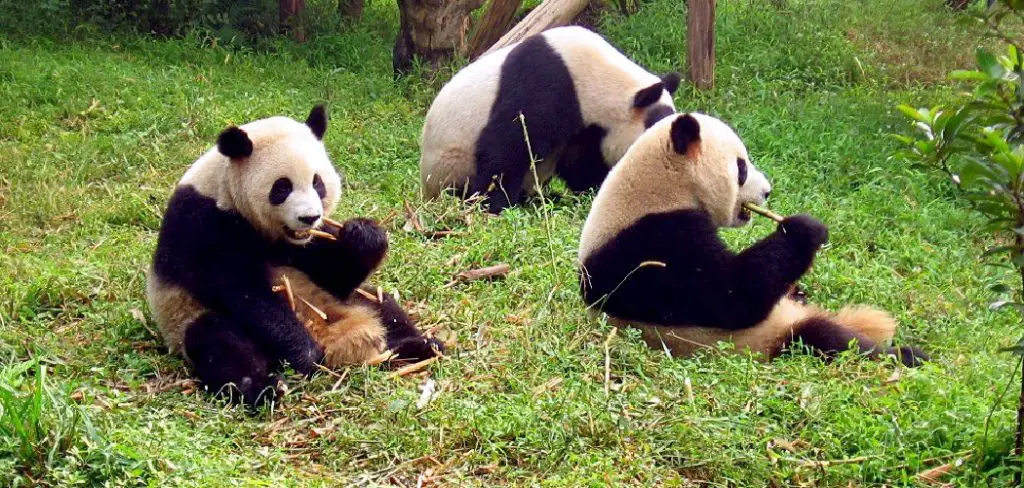
This article is designed to provide a grounded, respectful exploration of the Giant Panda Spiritual Meaning, Symbolism and Totem. We will examine the panda’s natural history and biological uniqueness, dive into its profound symbolic significance in Chinese and global traditions, and consider what lessons this gentle giant offers as a totem or spiritual guide. Along the way, we’ll interpret dreams and omens associated with pandas, investigate how to connect meaningfully with their energy, and reflect on how the panda’s lessons of balance, peace, and gentle strength can be woven into your own life.
Natural History and Cultural Context
Bamboo Ecology, Diet, and Behavior
Pandas are ecological specialists, with over 99% of their diet consisting of bamboo. Despite being classified as carnivores, pandas have evolved to thrive on a diet that is typically the domain of herbivores. This reliance on bamboo requires them to spend up to 14 hours a day eating and limits their range to mountainous regions where bamboo is plentiful. Their slow and deliberate lifestyle is a direct reflection of their low-energy, high-fiber diet. Pandas tend to move quietly and calmly through their mist-shrouded forest homes, exuding an aura of patience and tranquility.
Pandas are solitary animals, coming together only briefly during the spring breeding season. The mother raises her cubs alone, demonstrating patience, tenderness, and protective instincts. Their solitary habits and relaxed behavior reinforce the panda’s symbolic association with introspection, presence, and living gently in harmony with one’s environment.
Folklore, Emblems, and Global Icon
In Chinese folklore and ancient art, the giant panda is revered as a rare and auspicious creature. Pandas have long symbolized peace, friendship, and gentle strength. In several Chinese legends, the panda appears as a bringer of harmony—its very presence calming conflict and connecting humanity to the rhythms of the natural world.
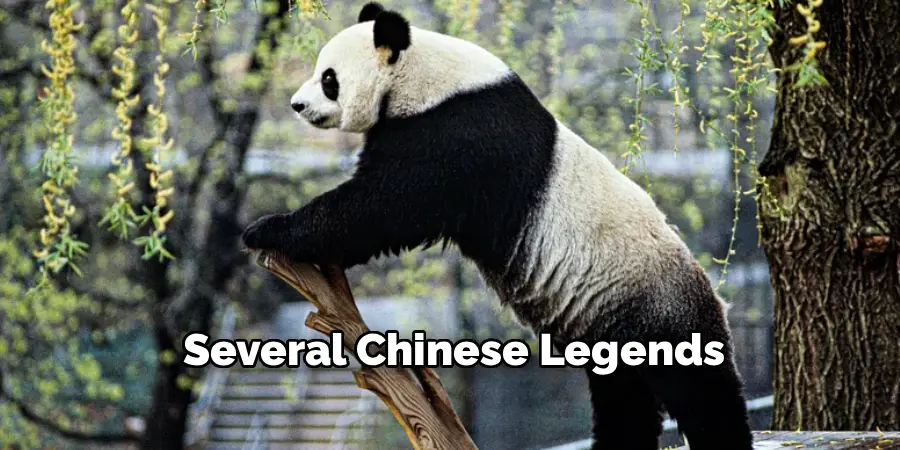
Today, the panda’s importance stretches far beyond China’s borders. It serves as the official symbol of the World Wide Fund for Nature (WWF), representing wildlife conservation and international cooperation. Diplomatic gifts of pandas, known as “panda diplomacy,” have strengthened ties between nations and inspired environmental stewardship worldwide. The panda’s image is a global icon for peace, goodwill, and our shared responsibility to protect Earth’s most vulnerable creatures.
Conservation, Rewilding, and Community
Thanks to decades of dedicated conservation efforts, the status of the giant panda has shifted from “endangered” to “vulnerable.” This monumental achievement is the result of habitat restoration, strict anti-poaching laws, community outreach, and international partnerships. The story of the panda is, at its heart, also a story of collective stewardship and hope.
The community effort required to save the panda extends beyond China’s forests. It is a model for global cooperation and reverence for all species. Spiritually, the panda reminds us of the transformative power of unity and the responsibility we share in nurturing harmony between human society and the natural world.
Giant Panda Spiritual Meaning
Balance, Yin–Yang, and Harmony
No animal embodies physical and spiritual balance quite like the panda. Its iconic black-and-white fur is a living example of the ancient Taoist concept of yin and yang—opposite but complementary forces that create universal harmony. The panda’s color pattern, with contrasting yet harmonious patches, speaks to the integration of light and dark, activity and rest, strength and gentleness in each of us.
The Giant Panda Spiritual Meaning, Symbolism and Totem lies at the heart of this teaching: true power comes from balance. The panda’s presence inspires us to seek harmony in our thoughts, actions, and relationships and to embrace the unity of apparent opposites within ourselves.
Gentleness, Peace, and Soft Strength
Despite their size and impressive set of jaws, pandas are rarely aggressive. Their energy is one of non-retaliation and coexistence. In both daily life and myth, the panda symbolizes peace, compassion, and the effectiveness of gentle action.
This “soft strength” is a lesson to those who feel pressured to be forceful or competitive to succeed. The panda shows that gentleness is not weakness—it is a power that nurtures, sustains, and heals. Through steady presence and calm action, the panda inspires us to lead without domination and to nurture compassion in ourselves and others.
Focus, Simplicity, and Devotion
A panda’s singular devotion to bamboo is a testament to the spiritual value of focus and simplicity. By narrowing its diet and lifestyle, the panda teaches the wisdom of cutting through distractions and devoting energy to what truly sustains you. In a world full of choices and obligations, the panda reminds us to simplify, to focus on life’s essentials, and to find joy in simple, steady routines.
The panda’s life also demonstrates the beauty in persistence. Even when food is scarce and times are hard, pandas patiently seek out nourishment, embodying the virtues of devotion, patience, and faith in the process of life.
Symbolism Across Traditions
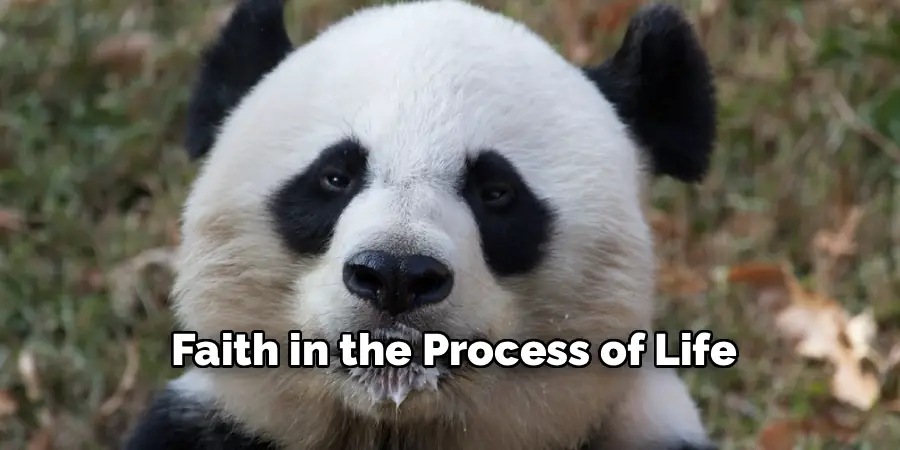
Chinese Stories and Seasonal Festivals
In Chinese tradition, the panda’s black-and-white coat is said to represent the balance of opposites, much like the yin-yang symbol found in Taoism. Pandas appear in local folklore as peace-bringers and forest guardians, revered for their rare appearances and calm demeanor. During ancient seasonal festivals, images of the panda were displayed to usher in tranquility and avert calamity, reaffirming their role as symbols of harmony.
Black-and-White Wisdom: Paradox and Unity
The colors of the panda are more than just beautiful markings—they are a living meditation on paradox and unity. Black represents the unseen, the feminine, the receptive, while white stands for the visible, the masculine, and the active. Together, they express the profound unity of life’s contradictions.
For many, the panda’s color symbolism suggests that seemingly opposing qualities—strength and softness, action and stillness, joy and sorrow—can coexist within us, making us more whole and wise.
Comparisons with Other Peace Archetypes
The panda stands among other beloved symbols of peace and gentleness, such as the dove, the lamb, and the olive branch. Yet, it is unique in embodying peace with grounded strength—a reminder that compassion does not negate power, but rather refines it. Where the dove soars and the lamb grazes, the panda sits, roots itself, and teaches us the power of presence and stillness.
Giant Panda as a Totem Animal
Life Lessons: Balance, Patience, and Presence
For those who feel a kinship or deep fascination with the panda, embracing the Giant Panda Spiritual Meaning, Symbolism and Totem brings essential life lessons. First among these is the importance of balance: making time for work and rest, for solitude and companionship, for movement and stillness.
The panda totem encourages patience. Just as the panda does not rush through its day, neither should we hurry personal growth or healing. Instead, the panda teaches steady, mindful presence—being fully engaged with whatever or whomever is before us.
Gifts: Calm, Compassion, and Perseverance
If the panda comes into your life as a spirit guide, it may bring with it the gifts of profound calm, a generous heart, and unwavering perseverance. This calm is not born of inaction, but of deep self-acceptance and trust in the flow of life. The panda’s gentle, nurturing energy comforts those enduring hardship, giving them the endurance to persevere through even the slowest or most difficult journeys.
Challenges: Inertia, Avoidance, and Over-Comfort
The shadow side of the panda totem reveals itself in the risks of inertia, avoidance, and becoming too comfortable. While finding peace in solitude and routine is a gift, it can lead to stagnation if taken too far. The panda encourages healthy boundaries between comfort and growth, teaching that it is possible to enjoy “just being” without falling into passivity or disengagement from life’s challenges.

Omens, Signs, and Synchronicities
Tracks, Bamboo Shoots, and Gentle Encounters
Sightings of panda tracks, clusters of bamboo shoots, or even images of pandas can signal the need to slow down, simplify your routines, or seek peaceful solutions. In synchronistic moments, a panda’s gentle appearance may serve as a reminder to soften your approach and to be more patient with yourself and others.
Mist, Mountains, and Waterfalls
The panda’s natural habitat—shrouded in mist, dotted with steep mountains and cascading waterfalls—embodies tranquility, seclusion, and the promise of discovery. Encountering these elements in real life, dreams, or meditative visions is often symbolic of a period of introspection, spiritual retreat, or the need to find peace within chaos.
Colors, Numbers, and Elemental Correspondences
The panda’s black and white coloring is closely linked to the Earth element, groundedness, and stability. Spiritually, it is also associated with the numerological vibration of balance and harmony—often seen in twos or in mirrored patterns. These signs call attention to the need for integration, reminding you that true power arises from unity and inner alignment.
Dreams and Meditative Encounters
Eating Bamboo: Simplicity and Focus
If you dream of a panda quietly eating bamboo, your subconscious may be advising you to streamline your life and focus on what truly nourishes you. The repetitive, meditative act of eating hints at the fulfillment found in modesty, patience, and mindful consumption—not only of food but of information, relationships, and responsibilities.
Play, Rolling, and Relaxation
Dreams of pandas playing, rolling, or resting on their backs are powerful reminders to let go of excessive seriousness and to find moments of joy, relaxation, and play. Such dreams often appear during stressful periods, encouraging you to step back, breathe, and embrace ease.
Mothers, Cubs, and Tender Protection
To see a mother panda and her cubs in dreams suggests the importance of nurturing, gentle protection, and caring for those who are vulnerable—including your own “inner child.” It can also be a sign to reconnect with supportive, compassionate relationships or to examine how you offer and receive care.
Shadow Work with the Panda
Over-Comfort, Passivity, and Stagnation
The spiritual shadow of the panda is most evident when comfort becomes complacency. While the panda’s energy can soothe and heal, it can also tempt you to withdraw from challenges, slip into passivity, or settle for less than you are capable of achieving. Recognizing this shadow and gently encouraging yourself toward growth is crucial for wholeness.
Boundaries, Self-Care, and Compassionate Action
Having healthy boundaries is an act of compassion, not only for yourself but for others as well. The panda teaches that true kindness includes learning how to say no, resting when needed, and advocating for your own needs. This wisdom guides you to practice self-care and to extend that sense of care outward in meaningful action.

Reclaiming Joy Without Numbing
Joy is integral to the panda spirit, but not as a means of escape. The challenge is to reclaim genuine pleasure and contentment without using them to numb yourself to difficult emotions or circumstances. The panda teaches how to sit with all experiences—light and dark, pleasant and painful—and emerge wiser, more resilient, and authentically joyful.
Practical Rituals and Offerings
Bamboo-Inspired Altars and Ethical Offerings
If you feel called to celebrate panda energy in your spiritual practice, consider crafting a small altar adorned with bamboo stalks or leaves, black and white stones, or images of pandas. Offerings of gratitude, handwritten notes of intention, or donations to panda conservation organizations are especially meaningful ways to honor this gentle totem.
Stones, Herbs, and Colors for the Panda
Stones such as black tourmaline (for grounding) and selenite (for balance and unity) support meditative work with panda energy. Herbal teas made from bamboo leaves, white peony, or lotus root bring the essence of the panda’s habitat into your daily ritual. Embrace the colors black, white, and soft green in your home or on your altar to keep your intentions aligned with the panda’s calm and harmony.
Slow Breath, Tai Chi, and Tea Rituals
The best practices for connecting with Panda Energy are gentle, slow, and mindful. Deep breathing exercises, gentle Tai Chi, and tea meditations encourage presence, calm, and awareness in everyday life. Allow yourself to move deliberately, savor each sip of tea, and rest often—mirroring the panda’s pace so that peace may settle into your spirit.
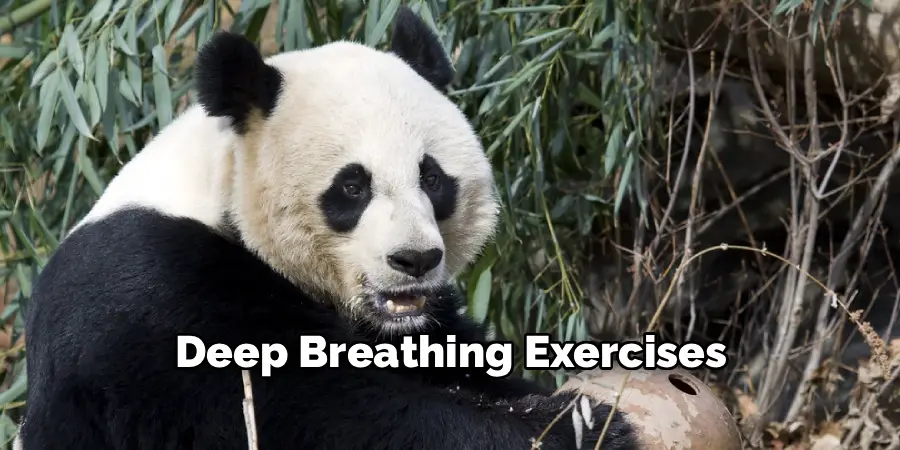
Integrating Medicine into Daily Life
Simplicity Practices and Gentle Routines
Bringing the giant panda’s lessons into your life means prioritizing simplicity. Declutter your space, pare down your schedule to what is truly meaningful, and develop daily routines that infuse your day with calm, presence, and gentle discipline.
Peaceful Communication and Conflict De-Escalation
The panda’s gentle nature is also a cue for shifting the way you interact with others. When conflict arises, seek to de-escalate with understanding, patience, and a soft tone rather than force. Listen deeply, seek common ground, and lead conversations toward common solutions just as the panda brings harmony to its environment.
Conservation Support and Community Care
Perhaps the greatest lesson the panda offers is in stewardship. Support conservation organizations, practice environmental awareness in your daily choices, and care for the people and ecosystems that sustain your life. The panda’s journey from endangerment to hope is a reminder that meaningful change comes from collective action—something each of us can participate in, however small our part may seem.
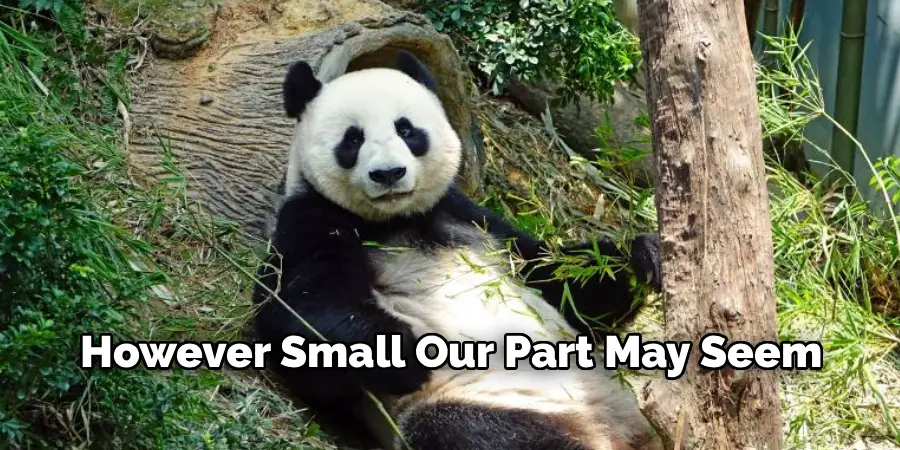
Conclusion
In every aspect of its life—from diet and behavior to its history as a global symbol—the giant panda stands as an extraordinary teacher of balance, gentleness, and peaceful strength. The lessons woven into the Giant Panda Spiritual Meaning, Symbolism and Totem are as relevant today as ever: cultivate harmony within yourself, act with compassion without sacrificing boundaries, and find joy in the simple routines that nourish your spirit.
As you move forward, allow the panda’s quiet wisdom to guide you—not only in moments of stillness but also in action. Honor the panda’s cultural significance and the communities dedicated to its protection by practicing daily stewardship, offering kindness, and seeking unity over division. When you embody the panda’s peaceful presence, you help cultivate harmony not only in your own life but in the world around you.
You Can Check It Out To Red Fox Spiritual Meaning.
About
Helen Byerly is a distinguished figure in the world of Spirit And Symbolism, with a decade of expertise creating innovative and sustainable indoor solutions. His professional focus lies in merging traditional craftsmanship with modern manufacturing techniques, fostering designs that are both practical and environmentally conscious. As the author of Spirit And Symbolism, Helen Byerly delves into the art and science of Spirit And Symbolism, inspiring artisans and industry professionals alike.
Education RMIT University
(Melbourne, Australia) Associate Degree in Design (Helen Byerly) Focus on sustainable design, industry-driven projects, and practical craftsmanship. Gained hands-on experience with traditional and digital manufacturing tools, such as CAD and CNC software.
Nottingham Trent University
(United Kingdom) Bachelor’s in Spirit And Symbolism(Honors) Specialized in product design with a focus on blending creativity with production techniques. Participated in industry projects, working with companies like John Lewis and Vitsoe to gain real-world insights.
Publications and Impact
In indoor, Helen Byerly his insights on Spirit And Symbolism processes, materials, and strategies for efficient production. His writing bridges the gap between artisan knowledge and modern industry needs, making it a must-read for both budding designers and seasoned professionals.
